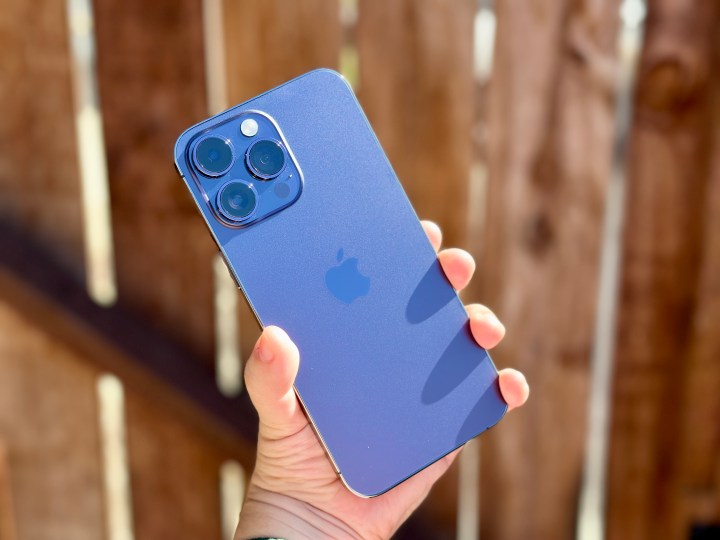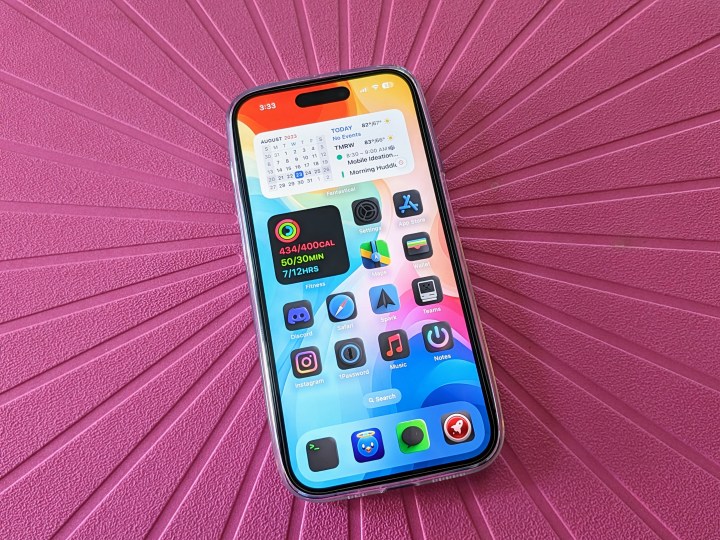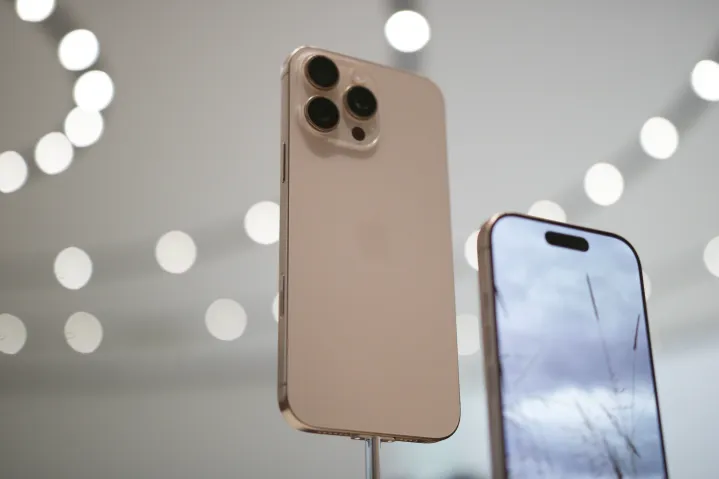Apple’s smartphones are finally entering a new era — a phase where the software is driving as much innovation as the hardware. In fact, if one looks at the magnitude of changes that iOS 18 brings to the table with Apple Intelligence at the helm, the hardware enhancements pale in comparison. The Apple iPhone 16 Pro is at the forefront of that movement, thanks largely to the inclusion of Apple’s new AI. But is there any merit in holding on to an older iPhone?
The iPhone 14 Pro is the focus for most buyers’ “keep or jump” dilemma. A remnant of the Lightning port era, the iPhone 14 Pro continues to prove its mettle as a reliable warhorse with a terrific camera. But the kind of comprehensive changes across screen, silicon, charging, and software parameters introduced by the iPhone 16 Pro also make it a candidate for an upgrade.
If you’ve been holding on tight to your iPhone 14 and aren’t sure if there are enough meaningful advancements with the iPhone 16 Pro to warrant a spending spree, here’s a detailed breakdown to guide your upgrade decision. And if you’re interested in what we think about the rest of Apple’s line, we have reviews of the iPhone 16 and iPhone 16 Pro Max, too.
iPhone 16 Pro vs. iPhone 14 Pro: specs
| Specs | iPhone 16 Pro | iPhone 14 Pro |
|---|---|---|
| Size | 149.6 x 71.5 x 8.25 mm (5.89 x 2.81 x 0.32 inches) | 147.5 x 71.5 x 7.85 mm (5.81 x 2.81 x 0.31 inches) |
| Weight | 199 g (7.03 oz) | 206 g (7.27 oz) |
| Screen | 6.3-inch Super Retina XDR OLED
1206 x 2622 pixels ProMotion with 120Hz dynamic refresh rate Dolby Vision, 2,000 nits brightness |
6.1-inch Super Retina XDR OLED
1179 x 2556 pixels ProMotion with 120Hz dynamic refresh rate Dolby Vision, 2,000 nits brightness |
| Operating system | iOS 18 | iOS 18 |
| Build | Titanium with textured matte glass back | Stainless steel with textured matte glass back |
| Buttons | Action Button Camera Control |
Ring/Silent switch |
| Storage | 128GB, 256GB, 512GB, 1TB | 128GB, 256GB, 512GB, 1TB |
| Processor | Apple A18 Pro
Six-core CPU Six-core GPU 16-core NPU |
Apple A16 Bionic
Six-core CPU Five-core GPU 16-core NPU |
| Camera | Rear:
48-megapixel primary, f/1.8, OIS 48MP ultrawide, f/2.2, 120° FOV 12MP telephoto, f/2.8, 5x optical zoom Front: 12MP, f/1.9 aperture |
Rear:
48MP primary, f/1.78, OIS 48MP ultrawide, f/2.2, 120° FOV 12MP telephoto, f/1.78, 3x optical zoom Front: 12MP, f/1.9 aperture |
| Video | Rear:
4K, up to 120 fps Front: 4K, up to 60 fps |
Rear:
4K, up to 60 fps Front: 4K, up to 60 fps |
| Connectivity | Wi-Fi 7, dual-band
Bluetooth 5.3 |
Wi-Fi 6, dual-band
Bluetooth 5.3 |
| Ports | USB-C Gen 3.2
DisplayPort |
Lightning USB 2.0 |
| Water resistance | IP68 (maximum depth of 6m up to 30 minutes) | IP68 (maximum depth of 6m up to 30 minutes) |
| Battery & charging | Up to 23 hours video playback
45W fast charging 25W wireless charging via MagSafe 15W Qi2 wireless charging |
Up to 27 hours video playback
25W fast charging 15W wireless charging via MagSafe 7.5W Qi wireless charging |
| Colors | Black Titanium, White Titanium, Natural Titanium, Desert Titanium | Space Black, Silver, Gold, Deep Purple |
| Price | Starts at $999 | Starts at $999 |
iPhone 16 Pro vs. iPhone 14 Pro: design and display

There isn’t much to discuss here about any design overhaul, as the fundamental aesthetic language is identical. However, there are a few refinements that can only be felt when the two devices are held in hand. The iPhone 16 Pro is slightly taller and thicker than the iPhone 14 Pro, and a touch lighter too. That weight disparity predominantly has to do with the build’s material of choice. The latest flagship from Apple relies on titanium, which is lighter, more resilient, and better equipped to handle heat dissipation. The iPhone 14 Pro, on the other hand, has a stainless steel frame married to a matte glass shell.
Another crucial difference concerns the edges. The iPhone 14 Pro’s sides were quite sharp and the phone dug into the palm in quite an uncomfortable fashion. The iPhone 16 Pro takes a more rounded approach to the edges, making it cozier to hold, if not a day-and-night difference.

Apple has also slimmed down the bezels to accommodate a larger display on the phone. With the iPhone 16 Pro, you also get USB-C (Gen 3 port with Display Port support) with 10Gbps output as it ditches the Lightning Port (USB Gen 2) on the iPhone 14 Pro. In a nutshell, you get faster data transfer bandwidth and liberation from the dongle life.
The ingress protection is identical across both phones at an IP68 level, but the color options vary. The iPhone 16 Pro serves up a new Desert Titanium look that’s somewhat inspired by the gold trim on the iPhone 16 Pro, but the latter’s signature Deep Purple is gone. The rest of Apple’s latest options include silver, white, and black.
Another core difference, as mentioned above, is the display. The iPhone 16 Pro has a 6.3-inch panel, up from the 6.1-inch OLED screen on the iPhone 14 Pro. The rest of the attributes, such as pixel density, peak refresh rate, and brightness output remain identical. Apple says the latest iteration of Ceramic Shield on the iPhone 16 Pro is twice as strong, while the OLED panel’s brightness can drop to as low as 1 nit, which is technically great news from the lens of power efficiency.

Another crucial change is the introduction of two extra buttons on the iPhone 16 Pro that replace the mute switch on the iPhone 14 Pro. The Action button has already become a favorite of folks for folks looking to execute tasks or even shortcuts with the press of a button.
We also get the Camera Control, a physical button with a capacitive side to it. It’s a camera shutter in spirit, but can do a lot more. Using slide gestures, it can also handle adjustments like ISO or zoom level, among other camera controls.
iPhone 16 Pro vs. iPhone 14 Pro: camera
For users deep into video capture and engaged in professional workflows, the latest from Apple offers plenty. Both phones rely on a mostly identical 48-megapixel main camera and a 12MP zoom camera, but the iPhone 16 Pro takes things up a notch by upgrading the 12MP ultrawide lens to a 48MP sensor.

Another crucial upgrade is the inherent zoom architecture. The iPhone 14 Pro has a 3x optical range using a lens tunnel system for zooming. The iPhone 16 Pro reaches a 5x optical zoom range, thanks to the tetra prism lens architecture that was first seen on the iPhone 15 Pro Max. It also jumps to the Smart HDR 5 pipeline for more effective color contrast output.
On the imaging side, the iPhone 16 Pro enables full 48MP macro capture and can also take Spatial Pictures suited for viewing on the Apple Vision Pro headset. There are also new photographic styles on the table, alongside a new pad adjustment system to achieve the exact strength of a specific style. While that sounds appealing, it’s really the video capture side of things where the iPhone 16 Pro races into an altogether different league.
To start, the rear camera can now shoot 4K Dolby Vision videos at both 100 frames per second (fps) and 120 fps, and the results look incredible. Of course, for users who like more control over their video edits, the phone also opens the doors for log capture (with support for the Academy Color Encoding System), something the iPhone 14 Pro misses out on.

Apple has also armed the iPhone 16 Pro with four studio-quality mics, and they play a supremely important role. Apple claims they deliver more true-to-life sounds. The trick in question is audio mixing. Essentially, when you shoot a video, you can pick between directional audio presets like in-frame, studio, and cinematic. These presets let users focus on a certain audio sources in their video to highlight and emphasize specific inputs.
iPhone 16 Pro vs. iPhone 14 Pro: performance and software
The biggest shift between the iPhone 14 Pro and its 16-series counterpart is the processor, which not only stands out based on hardware merits, but also opens the doors for an entirely new software experience courtesy of Apple Intelligence.

Now, depending on how excited you are about AI, you may or may not make an upgrade choice, but here’s the lowdown. The A16 Bionic in the iPhone 14 Pro is based on TSMC’s 4nm process, and it serves a six-core CPU and a five-core graphics engine. The iPhone 16 Pro’s A18 Pro, built atop the newer 3nm node, packs six graphics cores.
The lift in processing firepower stands at 30%, while the GPU performance is improved by 40% this time around. Even compared to the mighty A17 Pro in the iPhone 15 Pro, Apple is touting a two-fold gain in hardware-accelerated ray tracing performance in games. It’s just that there are only a handful of games out there that can push ray tracing on the new and improved flagship iPhone.
Now, both iPhones have already received the iOS 18 update, but the experience is going to be quite different. The biggest upgrade is Siri interactions, which are not only a lot more natural, but also dig deeper into apps for seamless integration to get work done. It can even handle multimedia content editing using voice commands.

That means not only can Siri more efficiently perform tasks across different apps (both in-house and third-party), but it can also look into the details stored by these apps and accordingly respond to user queries. Additionally, when it can’t handle certain queries, they will be offloaded to OpenAI’s ChatGPT.
There’s a lot to unpack. The Notes app gets Writing Tools that let you handle rewrites, corrections, formatting, and summarization with a single click. AI smarts have also been extended to the Mail app, where they enable email summarization as well as smart reply suggestions.
App notifications are also intelligently brought together, summarized, and passed through focus filters. It works really well, though the system takes a few days to assess the app interaction habit before it can fine-tune the notification behavior. Another cool perk is automatic transcription and voice notes that can also be summarized with a single click.

On the more fun side of things, users will be able to convert rough sketches into beautiful drawings with a simple highlight and selection gesture. The Image Playground feature brings text-to-image facility across different places, including Messages.
Also, for users who often run into the need to look up Apple’s product guides online, Siri will save them a browser trip. The virtual assistant has ingested those guides and will offer step-by-step instructions right in the dialog box. Another cool upgrade is Screen Awareness, which lets the AI assistant take a peek at the onscreen content and answer contextual queries.
Apple Intelligence really is a big difference here — but it’s worth remembering that Apple Intelligence isn’t available yet, even on iOS 18. Instead, it will launch with iOS 18.1.
iPhone 16 Pro vs. iPhone 14 Pro: battery and charging
Among the most notable quality-of-life upgrades offered by the iPhone 16 Pro are improved mileage and faster charging. The iPhone 14 Pro could manage 23 hours of video playback, which translated into a single day of charge in the iPhone 14 Pro’s real-life use. The iPhone 16 Pro falls a bit short of that; in testing, it didn’t make it a full day without needing to be topped off. It would burn through 80% of battery life in roughly 10 hours, with only four to four and a half hours of active screen time.

As far as charging goes, the iPhone 16 Pro can hit 50% life in just half an hour. Apple has also boosted the MagSafe output for its latest flagship. The iPhone 16 Pro can reach a MagSafe power delivery peak of 25 watts when paired with a 30W brick, while the iPhone 14 Pro could only muster 15W for juicing up the lithium-ion unit packed inside its glass-metal chassis.
iPhone 16 Pro vs iPhone 14 Pro: availability and price
The Apple iPhone 16 Pro is now available. The base model of the phone will set you back $999, with more storage carrying higher costs and rising all the way to a 1TB option. The Apple iPhone 14 Pro is similar, with the same storage options and an initial starting price of $999.
However, given the latter’s older age, it’s likely you’ll find the iPhone 14 Pro at a much lower price than the newer flagship. During sales periods, it could be significantly so, making it a much more attractive option to those looking for a bargain.
iPhone 16 Pro vs. iPhone 14 Pro: should you upgrade?
The Apple iPhone 16 Pro, as mentioned above, is pushing the envelope with both software- and hardware-side innovations. But that also begs the question — is the iPhone 14 Pro a laggard that demands an upgrade just two years into its product life?

Well, the answer depends on how much utility you are going to get out of the exclusive iPhone 16 Pro perks.
The biggest differentiator, of course, is Apple Intelligence. The AI-driven overhaul of iOS 18 puts Siri and next-gen machine learning capabilities into every corner of the iPhone’s software. And over time, those AI conversations — especially Siri integrations — will appear inside third-party apps, as well. Ultimately, it will boil down to how much one has grown weary of the boring iOS experience and seeks to experience what a next-generation AI-driven experience feels like.
Then we have the camera chops. Now, the iPhone is still one of the nicest smartphone camera systems out there, and that applies to the iPhone 14 Pro as much as the iPhone 16 Pro. Is the newer phone better? Yes. Is it a big enough gulf that you’ll feel like the older phone is missing out? That’s less likely.
However, if you intend to push your phone in terms of ultrawide capture and, more importantly, videos that try to challenge a DSLR, the enhanced zoom and high-fps Dolby Vision perks will really light up a social media feed with stunning samples.

Apple has kept the asking price the same, which is great news and makes the upgrade even more compelling. For those who can score a good trade-in deal and absorb the deficit hit on their wallet, the iPhone 16 Pro is absolutely worth the jump. For the rest, the iPhone 14 Pro is still enough to last at least another year, or two, with ease.




